Continental U.S. only.
Continental U.S. only.
Mary's Kitchen Flour Sack Towels have proven universally recognized as the best kitchen towels for heat transfer vinyl transfer (HTV). These plain, highly absorbent, high-quality, 100% cotton tea towels have become indispensable as handy towels both inside and outside of the house; by extension, in the motor home or on the boat; in the restaurant, bar or coffee house; as clothing, aprons, drawstring bags or totes; for curtains, pillowcases and chair covers, the list goes on and on.
In the many ways these towels can be used, there are equally as many ways to decorate, detail or adorn them. In this article, we will focus on using heat transfer vinyl, or HTV for short, to apply any design you want to your flour sack tea towels.

Right off, let’s make clear this process is a far cry from the original, thick, iron-on or peel-n-stick vinyl that is famous for peeling away from the item it is first attached to. Thanks to technology that has applied its marvelous advances to nearly every aspect of the industry, the HTV market has greatly improved as a result of computer enhanced design and a most graceful system of cutting the vinyl.
For most people who are only interested in a one-time application, it may not make sense to lay out the expense for all the tools and equipment that make HTV such a pleasurable indulgence.
Judging from the ease of use and beautiful designs that you can create, however, it is no surprise that these products have established their own dedicated section in craft stores. They provide yet another means of decorating your flour sack kitchen towels to suit your preferences, whether you are using these items in your own home, designing personalized gifts, producing branding elements to help market your own products or just for fun.
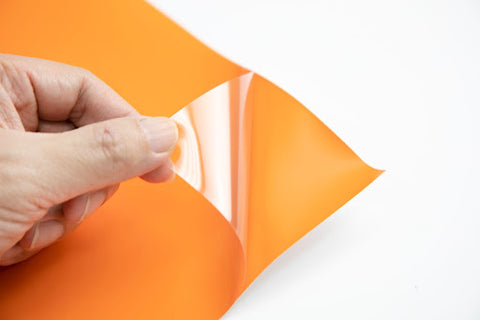
HTV is the process of using vinyl to transfer a design from concept to the intended substrate upon which you want it to appear. In our case, we are talking about transferring the design from vinyl to flour sack towels. By using a computer to develop your design, a world of creativity is open to infinite ideas.
Not only can you create designs yourself, but you can also access any designs that are available online.
The only precaution with sourcing materials from the internet is that you obtain the proper license permissions for any copyright-protected items. Generally, if your intent is for personal use rather than commercial use, this should not be an issue. However, if you intend to use images from which you will gain financially, then this is where you must pay particular attention to proprietary materials. We cover this more in detail later on.
At the most basic level, HTV can be accomplished using a pair of scissors to cut out shapes and using a household iron to press them onto a fabric such as a T-shirt or a dish towel, in our case.
The vinyl comes in sheets with a peel-away backing. A protective sheet is used between the iron and the subject being pressed to avoid either side from the extreme heat that can burn or mark surfaces. The vinyl generally comes in rolls although it also may be purchased as sheets. Applying heat to the vinyl produces a permanent, colorfast bond.
You are not limited to only solid colors with HTV. There are some cool vinyl patterns available like animal print and camouflage. Some are metallic and some are glittery making them great for Bling! Youtube has many videos showing how easy it is to layer different aspects of a design to get a full-color image.

There are many brands of HTV available, and there are differences between them, so it’s key to know and follow the instructions that come with them. You will soon figure out which ones you prefer. Each vinyl you select will state the exact heat and pressing time required. It is useful to familiarize yourself with your stock to avoid waste.
Some of the more popular heat vinyl transfer materials include:
Firefly Craft Heat Transfer Vinyl for Silhouette and Cricut, 12 x 20-inches
Siser EasyWeed Heat Transfer Vinyl, Color Starter Bundle, 12 x 15-inches
Rozzy Crafts 12 Color Heat Transfer Vinyl Starter Pack, 12 x 10-inches
Siser Glitter Heat Transfer Vinyl, 12 Color Starter Bundle, 10 x 12-inches
The key to HTV is the use of heat, pressure and time to transfer the image to the surface on which you want it to appear. Typically, this can be almost any flat surface that is smooth, so the transfer is successful.
It is possible to transfer vinyl to materials that have contour and shapes, but you cannot use the same method of heat and pressure that is needed for the flat vinyl materials used in HTV. For HTV, you can use a household iron. There are also heat presses that you can get to help systematize your work if you plan to do a lot of it.
There are many heat presses available from a variety of manufacturers. They are built to handle different sized work from label presses that only handle work sized 5 x 5-inches on up to large format presses that can handle work up to 40 x 48-inches. A small format heat press would be enough to handle our 12 x 12-inch towels. However, if you plan to sew towels together to produce larger items, you may want to think about this ahead of choosing a heat press.
In addition, some systems provide a portable heat press that can be positioned by hand on top of the area that you are pressing. Like stand-alone heat presses, you can program the heat and time duration into these devices. Take into consideration your level of production whether you are merely a hobbyist or plan to become a commercial business. The demands on business require that you have the right equipment to handle the load in order to meet deadlines for production.
The following is a list of the top vinyl cutting machines:
• Cricut Maker
• Cricut Explore Air 2
• Silhouette Cameo 3
• KNK Zing Orbit
• Sizzix 660425 Big Shot
• USCutter MH Series
The success you find in decorating your flour sack kitchen towels using HTV inevitably leads to expanding your designs and responding to requests from friends, family and even professionals seeking to use customized towels for branding. You begin to see how easy it is to produce a set of towels as gifts for anything from holidays and seasons to events like weddings and anniversaries to everyday activities like sports, religion or home décor.
You might get started just practicing on your own towels to give them a personal touch. There are countless designs and styles to make the kitchen towels that reflect your own personal style. With HTV, you can print designs in full color from your printer, set them up on your cutter, weed and peel and then heat press them onto your towels. Here is a more detailed account of the steps to follow:
Using studio software on your computer, you can play around with creating designs. The program will have images available and you can search for images online using copy or save. Once you bring files into the software, you will be able to follow the program options to further enhance or change the images as you like. This is a place where you will learn how many ways you can tailor images for your purposes. They can be as elaborate or as simple as you like.
Depending on whether you are applying your transfer to light or dark fabric, you will need to flop or reverse the image. This has to do with how you apply the transfer. On light fabrics, you generally are turning the image upside down so it would need to be flopped in the program before sending it to the cutter. However, with some vinyl materials, the same method of applying the transfer to dark fabrics is preferred because it produces more vibrant color saturation. In this case, you do not flop the image. You will be able to experiment with this using your own materials to determine how you prefer to proceed.
You load the heat transfer material into the cutting machine oriented with the clear plastic backing facing down. This puts the vinyl face up. There are default settings for the type of heat transfer material you are cutting. The material is pretty thin, and the cuts made are very fine and precise. You can perform a test cut if you are unsure, but you will find these programs and cutting machines are highly efficient.
For the most part, you will have some material to weed out. For example, with lettering, you have portions in the letters that need to be removed such as the inside of an “O” or the triangle inside the top of the “A” and so on. For flopped images, you leave your design on the backing. This is the typical procedure for applying a transfer to light fabrics. On dark fabrics, the image remains "right-reading" and you effectively peel the whole design from the backing to place it directly onto your towel or T-shirt. Remember, Mary's Kitchen Towels includes choices of bleached, unbleached, red, gray and black flour sack towels to accommodate your designs.
Another part of weeding includes cutting whole pieces away from your sheet that is not part of your design. You use a weeding tool to remove excess vinyl. It might look like a dental tool or a hook. You can also use tweezers, a craft knife or a straight pin. If you have any trouble pulling the material away from your design, you can manipulate the vinyl by bending it so you can see the very fine cut lines in a better light. Double check you have removed all the unwanted pieces before pressing.
Since there are so many different presses and vinyl, you really need to read the recommendations for what you are using. Generally, though, if you are using a household iron, the recommendation is to set it on high without the steam option engaged and hold it on your design for 10 to 40 seconds depending on the type of vinyl. If you use the mobile press that comes with the HTV system, you can follow the instructions for keying in the specifications. In both cases, you want to ensure the iron or the press covers the entire design. You can test the edge of the design to see if the vinyl is releasing or needs more heat time.
Note: It is important to ensure you trim the backing sufficiently that none of it ends up between the vinyl and the fabric as this can impede the transfer. Also, make sure you use a protective sheet of parchment or a towel between the iron and the backing. This will prevent burning.
It is best to wait between 30 to 45 seconds following your pressing before gently peeling back the clear plastic backing until it is completely removed. Allowing the vinyl to cool will help reduce the risk of the material wrinkling. Once you have removed the plastic, you will reveal your remarkable work. As you work with these materials, you become inspired to do more.
As we said, we need to cover the basics of getting permission to use text, images or artwork from the internet or other sources as designs you can transfer onto your flour sack tea towels. You must resist the ease of copy and paste making it seem so convenient to simply acquire images.
Generally, the copyright permissions process may be accomplished in six simple steps as follows:
Understanding how to navigate the licensing and usage laws can help you avoid penalties associated with cease and desist orders or lawsuits with financial demands.
Mary’s Kitchen offers volume pricing on flour sacks because we know that once you get started using HTV to design your creative sets of towels, you will be back for more. We want to provide the best deal for you whether you are giving them away as gifts or plan to make a business out of them. With today’s expansion of home-based crafters making and selling their work online or at craft shows, there is more appeal and demand for hand-made products.
Further, there is a unique call for tea towels used in branding. Think of the real estate agent who has closed a sale and wants to leave a personalized set of towels for the new homeowners as a token of appreciation. These towels can be monogrammed for the new owners with the agent’s logo appearing on them as well.
Flour sack tea towels can be sewn into a variety of garments that then can be pressed with vinyl designs for even more branding ideas. If you have a bowling team, you can make bowling shirts with the team logo blazoned across them for uniformity and team spirit. Aprons are often an item that can be used in a variety of environments and also present another opportunity to use flour sacks to make them and HTV to design them.
Flour sack cotton used as pillow ticking or for pillowcases is yet another way to create a personal border pattern. Tote bags are a favorite, especially for the kids. You can engage them in the project of designing their own HTV and helping in the process. These can be used to hold school items, as a beach bag or just about anything. You can always find a good use for a tote bag.
Flour sacks are often used to wrap gifts such as a bottle of wine or a fresh-baked pie. If you are inclined to make your own form of a trademark design, you can become known for your deeply personal touch in taking advantage of this form of self-extension. It is always a welcome method of giving a gift, and when you add some unique HTV designs that reflect your personal flair, it means even that much more. That is a wonderful way to become notorious! Once you get started, you find more ways you can apply HTV to flour sack towels.
Get started with some ideas like these, and you will soon find there is only more expansion making you a valuable connection for businesses, religious groups, non-profits, schools, clubs and more. The quality of our towels and the high-quality appearance you can achieve with HTV designs give your work a highly commercial appeal. Give it a try and discover the many ways you can enjoy both the fun and benefit of HTV.
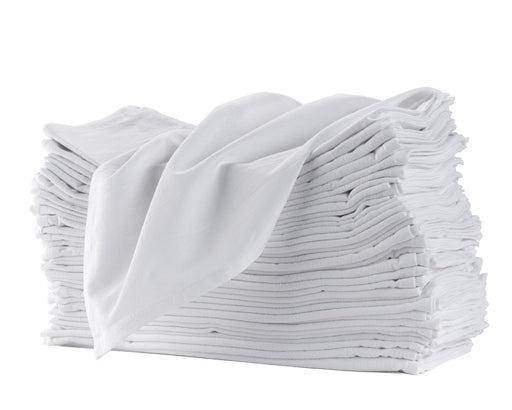
If you need red, gray, blue or black color please click here. ★ Multipurpose, available white or natural colors (unbleached), matching, wholesale ...
View full details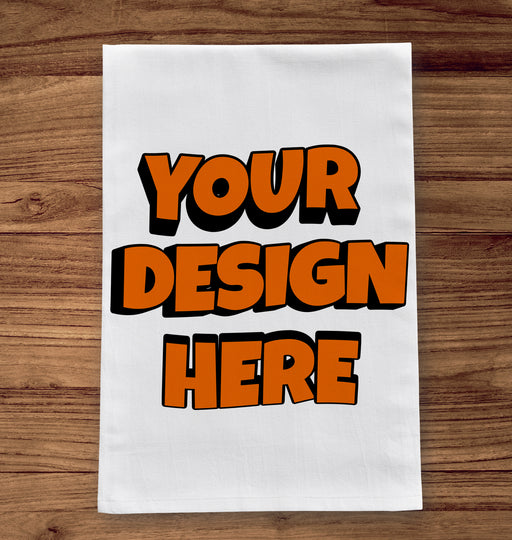
Custom Printed Flour Sack Towels ★ Current Production Time: 3–4 Weeks WHOLESALE | RESELLERS | DESIGNERS ✅ Everyone is welcome to order! If you'r...
View full details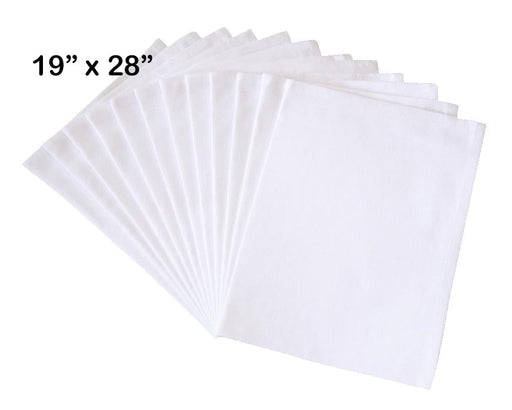
100% Cotton, comes in white (bleached) and natural (unbleached) color A uniform 19" x 28" rectangle, 130 thread count, flour sack napkins hemmed...
View full details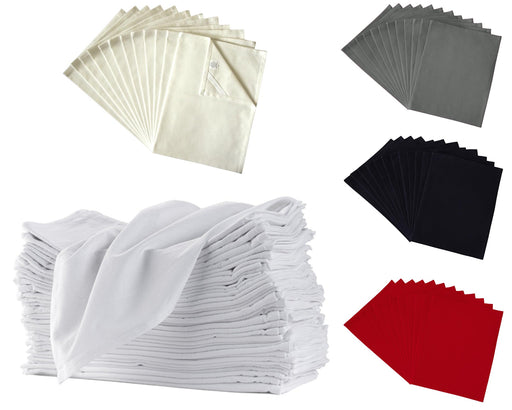
100% Cotton A uniform 27" x 27" square, 130 thread count, 3 oz each heavyweight flour sack dish towels and hemmed on all sides A corner loop for...
View full details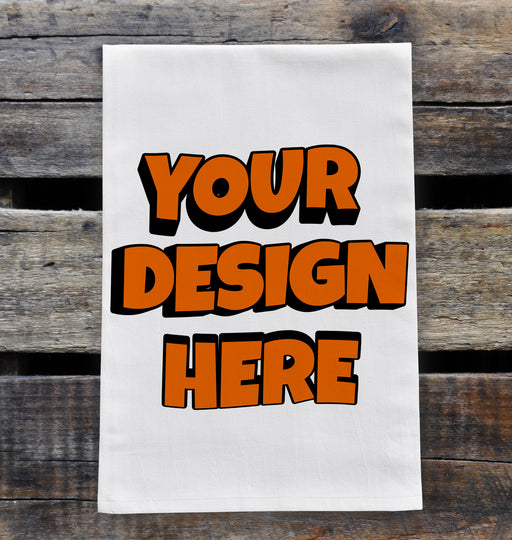
Attention Re-sellers, Wholesalers, and Designers: If you need to order more than 100 pieces, please contact us for our special wholesale pri...
View full details